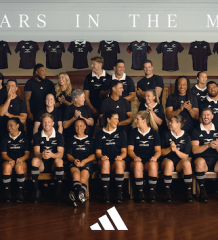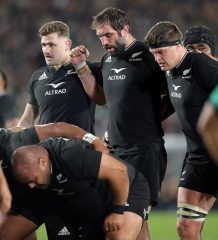Female rugby player numbers continue to grow
· 157,218 total registered players, up 1 percent
· 14.6 percent increase in female player numbers to 27,838 registered players
· 2.6 percent increase in Small Blacks (5-12 years)
New Zealand’s female rugby player numbers continue to surge with an additional 3,500 woman and girls lacing up their boots during the 2018 season.
Total rugby player numbers remain healthy with nearly 157,218 people registering to play New Zealand’s national game in 2018 including a 2.6 percent increase in the Small Blacks (5-12 years) ranks.
Female player numbers rose to a total of 27,838, which represents a 14.6 percent increase on 2017 with the growth in popularity spread across all age groups.
New Zealand Rugby Head of Women’s Rugby Development, Cate Sexton said the continuing growth represented an exciting opportunity for the game.
“Following our double-digit growth last year these figures show there is a real generational shift going on in our game and it’s great to see so many young girls being inspired to give rugby a go.
“The biggest area of growth was in our youngest demographic with a more than 15 percent increase in Small Blacks, so the future is very bright.
“I have no doubt many of them have been inspired by the success of our Black Ferns and Black Ferns Sevens teams and the example they are setting on and off the field.”
Sexton noted growth in female playing numbers had come off the back of increased New Zealand Rugby (NZR) investment.
“New Zealand Rugby and the Provincial Unions have put more resources into women’s rugby and that’s paying off. We have seen Molenberg come on board with an historic sponsorship of our Black Ferns and Black Ferns Sevens and the recent television viewership figures for the Laurie O’Reilly Test matches highlighted the growing public interest.”
New Zealand Rugby Head of Participation, Steve Lancaster, said overall numbers remained strong, but also highlighted some challenges, particularly around teenagers.
“Rugby is our national sport and it’s great to see so much diversity in our game across age, gender and ethnicity and we are seeing some real growth in new non-contact forms of rugby including Rippa Rugby and Quick Rip.
“However, there is no doubt the world has changed and young people particularly have a lot of choices.”
While male player numbers remained strong in the Small Blacks category, there was a 4.8 percent drop in the 13-20 years age bracket, which contributed to an overall drop of 1.8 percent among male participation.
“We are not alone in facing the challenge of making sure our game appeals to the next generation and that’s why we have conducted a comprehensive review of secondary school rugby.”
Former All Black Brent Anderson is leading the Secondary Schools Rugby Review and is in the process of finalising its recommendations to NZR.
“It’s great to see non-contact forms of the game like Rippa Rugby and Quick Rip continue to grow in popularity. We need to continue to think innovatively and ensure the game reflects the desires of our participants to keep rugby relevant and appealing to teenagers.”
Lancaster said volunteers were vital to ensuring rugby remained healthy.
“There are more than 5,000 rugby matches every week around New Zealand and there is an army of volunteers who make that possible, from coaches and referees to administrators, parents and supporters,” he said.
Related Posts
« RUBEN VAN HEERDEN JOINS THE CELL C SHARKS Red Bull to ignite search for Sevens stars »




















